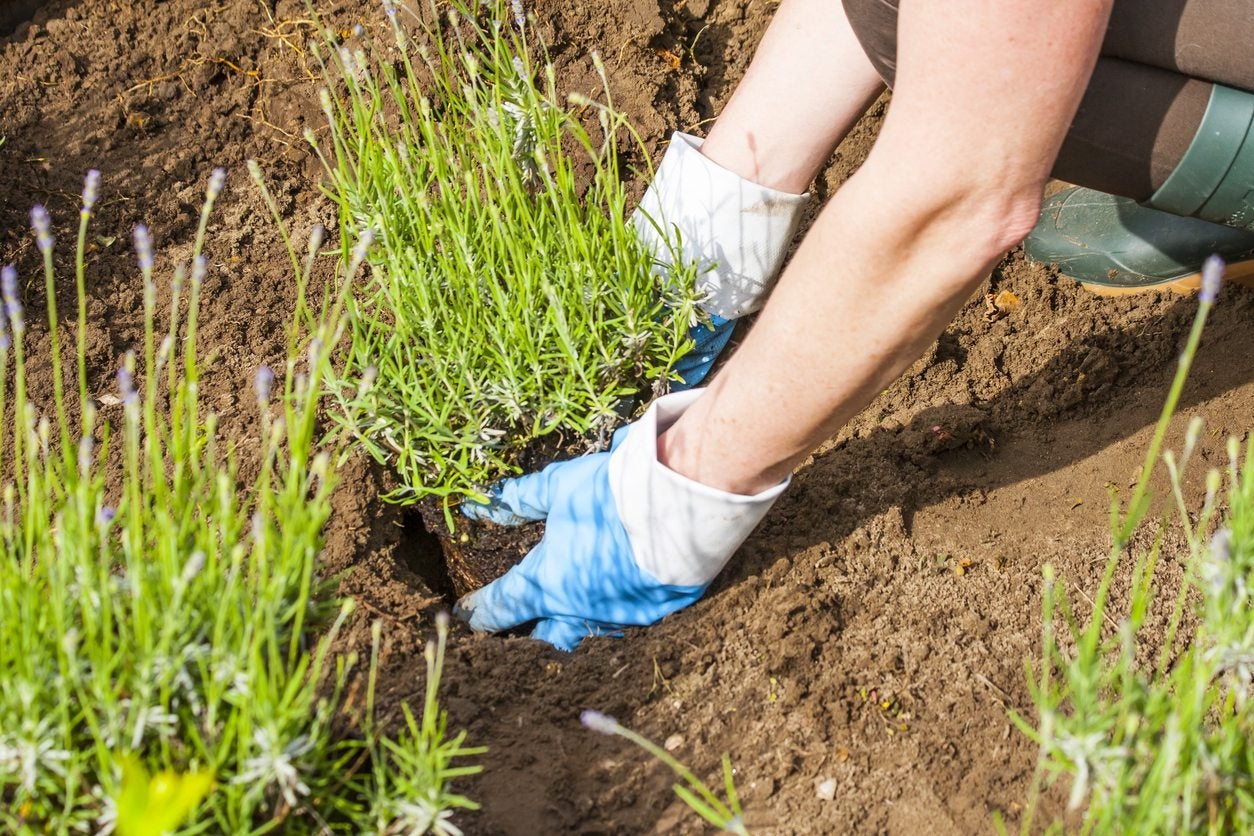Lavender Plant Division: Can Lavender Plants Be Divided


If you’re reading this article, it means you have an interest in dividing lavender plants and who can blame you? Anyone who has smelled the floral sweet scent of lavender would obviously want to make more of these glorious plants, right? The burning question is, however, “Can lavender plants be divided? The answer is, “it’s kind of complicated.” What do I mean by that? To find out, read on to learn more about how to divide lavender plants and when to split up lavender in the garden.
Can Lavender Plants be Divided?
I recently asked some professional lavender growers about lavender plant division and the general response was that lavender is a sub-shrub and, hence, can’t be divided. Lavender plants are a typical sub-shrub in that they only have a single stem and root system. Branches grow forth from this main stem just above ground level. Lavender plant division performed on the roots of a plant with only one main stem results in a high plant mortality rate, so it is strongly advised against. It not only has the propensity to kill but is the hardest way to propagate lavender plants. Seed, layering, or cuttings are much easier methods and don’t risk plant vitality. Cuttings are the most popular method of lavender propagation. However, if you’re going to buck the advice not to do it and attempt division anyways, the best candidate (or victim) would be a lavender plant which has exhibited a decrease in flower production over a 2+ year time frame, or one which is dying from the center out. As for when to split up lavender, the ideal time would be fall or spring. In summary, lavender plant division performed in this way is for the gardener who thrives on doing things the hard way and embraces challenges.
How to Divide Lavender
Remember how I said it was complicated? Well, there is a roundabout way of dividing lavender – but only on multi-stemmed plants. You are probably asking yourself, “Wait – didn’t she say that lavenders only have a single stem?” Woody perennials, such as lavender, sometimes propagate themselves by forming new plants when one of their branches makes contact with the ground and forms roots. You can create new independent plants from these layered stems by using a sharp sterile knife to cut between the rooted stem and the original plant, then digging up the new plant and planting it elsewhere. This is not probably what initially comes to mind when you think of dividing lavender plants but it is a type of division nonetheless.
Gardening tips, videos, info and more delivered right to your inbox!
Sign up for the Gardening Know How newsletter today and receive a free copy of our e-book "How to Grow Delicious Tomatoes".

Shelley Pierce was a writer for Gardening Know How, contributing to hundreds of articles for the site.
-
 Looking For Plants To Give You The Soft And Fuzzies? Try These 5 Fuzzy Leaf Plant Options
Looking For Plants To Give You The Soft And Fuzzies? Try These 5 Fuzzy Leaf Plant OptionsLovers of texture, drama, silver foliage and tactile plants will adore these special sensory garden additions. These fuzzy leaf plant options will leave you all aglow
By Susan Albert
-
 Get Ready For A Summer Of Hummers! Grow These Full Sun Hummingbird Plants and Flowers
Get Ready For A Summer Of Hummers! Grow These Full Sun Hummingbird Plants and FlowersIf you’re lucky enough to enjoy a sunny backyard, make sure you are maxing out on your pollinator opportunities and grow these full sun hummingbird plants and flowers
By Tonya Barnett